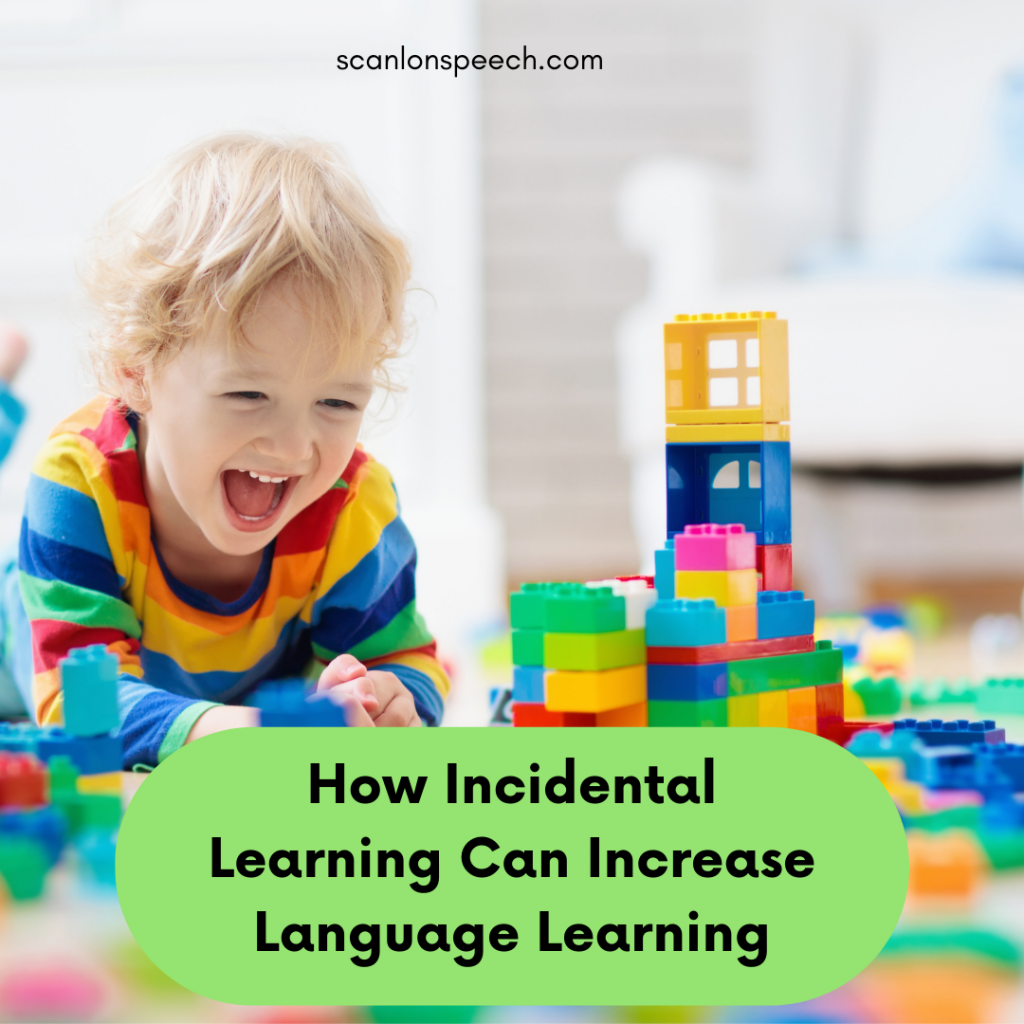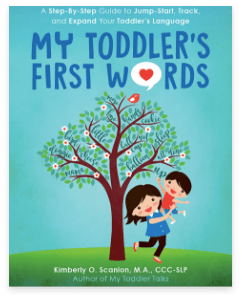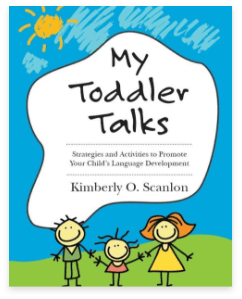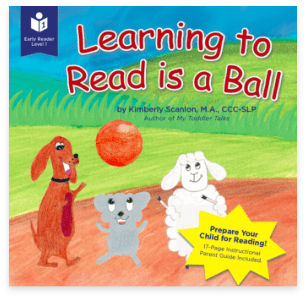Sign Up For Our E-Blast To Receive Information on our Books, Speech Therapy materials and our latest freebies!
Incidental Learning and Speech Therapy

Young children learn many new words and concepts when it’s not necessarily planned or intentional; the learning is incidental.
The child is engaged in an activity, one she finds enjoyable, or is going about her business, when – BOOM – she learns something new.
Incidental learning can be one of the best ways to learn words and expand vocabulary because the experience is natural, meaningful, memorable and effective.
Even as an adult, I attempt to expand my vocabulary by reading and looking up words I don’t know. However, I rarely recall words when I learn them in a passive way. Rather, I acquire new vocabulary when:
- The learning is hands-on.
- I can somehow link the word to prior experiences or vocabulary
- It’s driven by necessity.
Brain research even supports this:
“…the brain appears to link new words with previously stored data in the category of transportation.” Simultaneously, the limbic system, comprising parts of the temporal lobe, hippocampus, amygdala, and prefrontal cortex (front part of the frontal lobe), adds emotional significance to the information (sour flavor is tasty in lemon sherbet but unpleasant in spoiled juice). Such relational memories appear to enhance storage of the new information in long-term memory (Andreasen et al.,, 1999)”.
The beauty about incidental learning is that you, the parent or educator, can easily facilitate it by selecting something the child is interested in and indirectly targeting it in a hands-on, meaningful activity.
As a speech language pathologist, I always incorporate incidental learning into my sessions.
For the child who is not yet talking, I may put a desired object in a clear jar that is in sight but out of reach. Then, I give the child the object when he requests it (how the child requests depends on his current level of functioning – looking at it, pointing at it, or verbally requesting it)
The incidental learning that occurred is that now Danny knows that he has to “request” before he gets the desired object. After he requests, then immediately open the jar and give it to him. This way you are naturally acknowledging his request and reinforcing it.
For the child who is talking and combining words, change the target. This time you want Tommy to learn the concept of twisting to open a jar. Give him the jar (because he’s already requested it) but DON’T OPEN IT! Let him try to open it himself. Teach him the word twist by saying twist while twisting the jar open.
Incidental learning is very powerful and can easily be incorporated into your daily routines.
How can you encourage incidental learning in your children?
Need some more tips to improve your child’s language?
Check out my books on AMAZON. Amazon affiliate links have been included.
Reference: Willis, Judy. “The Neuroscience of Joyful Education.” Engaging the Whole Child 64 (n.d.): n. pag. Print.
- Enhance Your Speech Therapy Sessions with ‘Picky Kitty’ – A Must-Have Game for Every Speech Therapist
- Same and Different: Why Speech Therapists and Educators Should Target this Basic Concept
- New Beginnings for Scanlon Speech Therapy
- Articulation Speech Therapy: Favorite Activities, Games, and Books to Target the TH Sounds
- Articulation Speech Therapy: Favorite Activities, Games and Books to Target the L Sound



